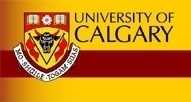Astrophysics ASPH
Instruction offered by members of the Department of Physics and Astronomy in the Faculty of Science.
Department Head - R.B. Hicks
Note: For listings of related courses, see Applied Physics, Astronomy, Physics, Medical Physics, and Space Physics.
Senior Courses
Astrophysics 309 H(3-1)
(formerly Astrophysics 409)
Solar System Astrophysics
Orbital mechanics and planetary observations. Mineralogy, structure, and evolution of the planets. Thermal, dynamic and chemical aspects of planetary interiors, atmospheres and ionospheres. Solar and planetary magnetism, magnetospheres, and activity cycles. Comets, asteroids, meteorites, and the origin of the solar system.
Corequisites: Prerequisites or Corequisites: Astronomy 211, Physics 325; and Physics 313 or 323 or 355.
Astrophysics 401 H(3-0)
(formerly Astrophysics 509)
Galactic Astrophysics
The galaxy: space distribution of stars and interstellar material; kinematics and dynamics of stellar systems; rotation and spiral structure; classification and global properties of galaxies; active galaxies.
Prerequisites: Astronomy 213, Physics 325, and Mathematics 349 or 351 or Applied Mathematics 311.
Astrophysics 403 H(3-0)
Stellar Structure and Evolution
Observational properties of stars; equations of stellar structure; physics of stellar interiors; structure of main sequence stars; early post-main sequence evolution and the ages of star clusters; advanced evolution phases; final stages of stellar evolution; white dwarfs, neutron stars and black holes.
Prerequisites: Astronomy 213 and Physics 325.
Astrophysics 501 H(3-0)
Stellar Atmospheres
Observational aspects of stellar atmospheres; the equations of transfer of radiation in stellar atmosphere; the Gray atmosphere; the equations of state; opacity, equations of statistical equilibrium; model atmospheres, spectrum line formation, comparison of synthetic spectra with real spectra of stars.
Prerequisites: Astrophysics 403, Physics 499.
Astrophysics 503 H(3-0)
Diffuse Matter in Space
Observations of gas and of grains in our galaxy and other galaxies; interactions amongst interstellar particles; interstellar molecules; distribution, small scale and large scale dynamics of the interstellar medium, formation of stars.
Prerequisites: Astrophysics 501.
Astrophysics 507 H(1-6)
Senior Astrophysics Laboratory
Lectures and laboratory sessions in observational astronomy, emphasizing methods of observation, data reduction, and analysis. Photometry and spectroscopy will be carried out on telescopes at the Rothney Astrophysical Observatory.
Prerequisites: Astronomy 213.
Corequisites: Prerequisite or Corequisite: Any 400-level Astrophysics course.
Note: Offered in odd-even dated academic years.
Graduate Courses
Astrophysics 607 H(3-3)
Advanced Observational Astrophysics
Principles and tools of modern ground-based and space astronomy with an emphasis on astronomical measurement of ultraviolet, optical, infrared, and radio radiation. Topics will include astrometry, photometry, spectroscopy, imaging, and interferometry data acquisition and reduction techniques. Laboratory exercises using astronomical data analysis software will be a major component of the course.
Astrophysics 609 H(3-1)
Advanced Theoretical Astrophysics
Theories of radiation transfer and dynamics with applications to stellar atmospheres, stellar and galactic structure, and the interstellar medium. There will be an emphasis on computational techniques, model development, and comparison with observations.
Astrophysics 611 H(3-0)
Radio Astronomy
Wave propagation, antennas, interferometry, aperture synthesis, radio receivers, and spectrometers. Applications to continuum and line radiation in stars, interstellar medium, and extragalactic objects.
Astrophysics 617 H(3-0)
Advanced Stellar Evolution
Structure and evolution of binary stars, mass transfer and mass loss from the system, angular momentum transfer and angular momentum loss from the system, interacting stellar winds in binary stars; consequences for stellar evolution. Specific aspects of binary evolution that bear on phenomena seen in astrophysics such as the Be-star phenomenon, blue stragglers, cataclysmic variables, pulsars, and x-ray sources. Aspects of evolution common to single as well as multiple-star systems will not be included.
Prerequisites: Note: It is expected that a student's background will include Astrophysics 403 or equivalent.
Astrophysics 621 H(3-0)
High Energy Astrophysics
Interaction of high energy particles with matter, propagation and origin of cosmic rays; structure of white dwarfs and neutron stars; the physics of jets and the accretion process onto compact objects; supernovae and supernova remnants; active galactic nuclei.
Astrophysics 697 H(3-0)
Topics in Contemporary Astrophysics
Topics will be from the research areas of staff members.
MAY BE REPEATED FOR CREDIT

